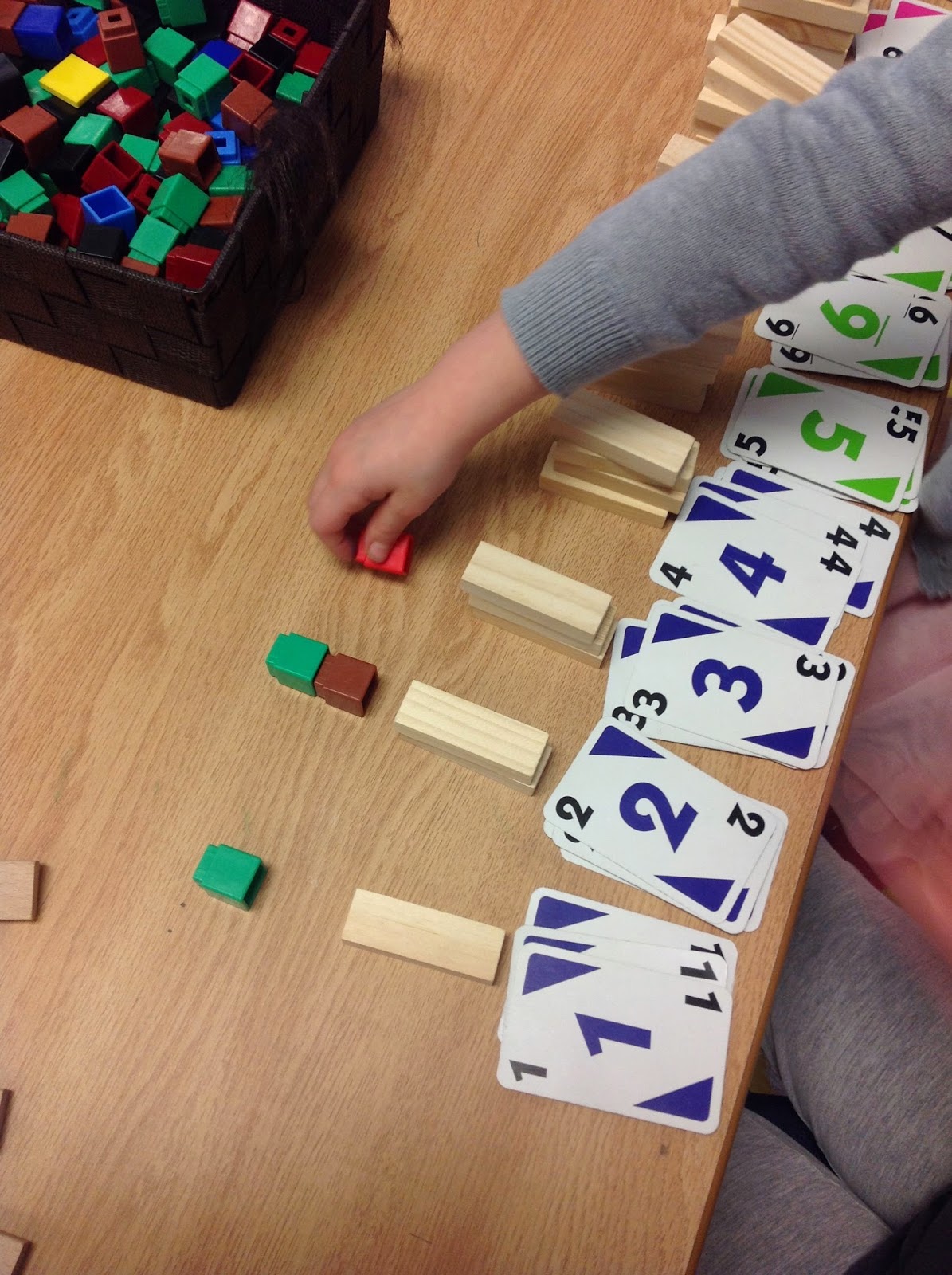Prior to this exploration, Heidi and I have been leading mini lessons during our Math Exploration and Learning Time around teaching to particular early number concepts (e.g. "movement is magnitude," "subitizing, "stable order" and "part/part/whole") using a variety of different mathematical tools (e.g. Rekenrek, connecting cubes, etc). While one of us is instructing a mini lesson, the other is circulating, documenting student learning, and asking prompting questions to push students' thinking.
Here's what unfolded...
While the other students were engaged in their various mathematical explorations, I noticed a JK/SK team (J.L. and R.V.) working closely together with the number cards and kapla blocks....they were co-creating a number line! Each student had a hand of cards and they were taking turns picking a card from each other and placing them in numerical order on the table (from 1-10). Even if a number was already down, they matched each card and with some prompting, they constructed a "tower" out of kapla blocks to show what that number looks like.
I noticed that both J.L. and R.V. would check each other's "towers" by counting each kapla block used and ensuring that it was the correct number of blocks (thus practicing their one-to-one correspondence skills). This reminded me of the domino card game we put out last week as an invitation for learning to practice recognizing numbers without having to count and matching the cards to the corresponding numbers on the domino. It was wonderful to see them using the new open-ended materials and applying what they learned in such an authentic way!
It was also great to see J.L. and R.V. make connections to our explorations of "Number Trains" and compose each number of their number line using the connecting cubes! R.V. even made a connection to creating an AB pattern!
Here are some of the question prompts I asked the girls as they were creating their number line:
1. Can you tell me what you're making?
2. I wonder how we could use these materials to show what these numbers look like?
3. Why did you choose to stack the blocks? What do you notice about the numbers? What do they look like?
4. How are all the numbers different?
5. What happens to the towers when you count forward to 10?
6. What happens to the towers when you count backwards from 10?
When asked the last two question prompts, both J.L. and R.V. came to the conclusions that when counting forward to 10 the "towers" got taller which meant the numbers got bigger and when counting backwards from 10, the "towers" got smaller which meant the numbers got smaller! Fascinating connections!
Here is some captured video documentation of the girls in action:
I'd like to thank a wonderful friend, Heather Jelley, for picking my brain and getting me thinking about my position as the active "observer" and what types of question prompts I used to get these students to this point in their learning and understanding! It certainly gave me goosebumps revisiting my recordings and transcriptions!
Here's one "Think Tank" question that Heather left me with and I welcome any thoughts and ideas!
How do you invite/engage/provoke learning in your classrooms with a math focus?









No comments:
Post a Comment